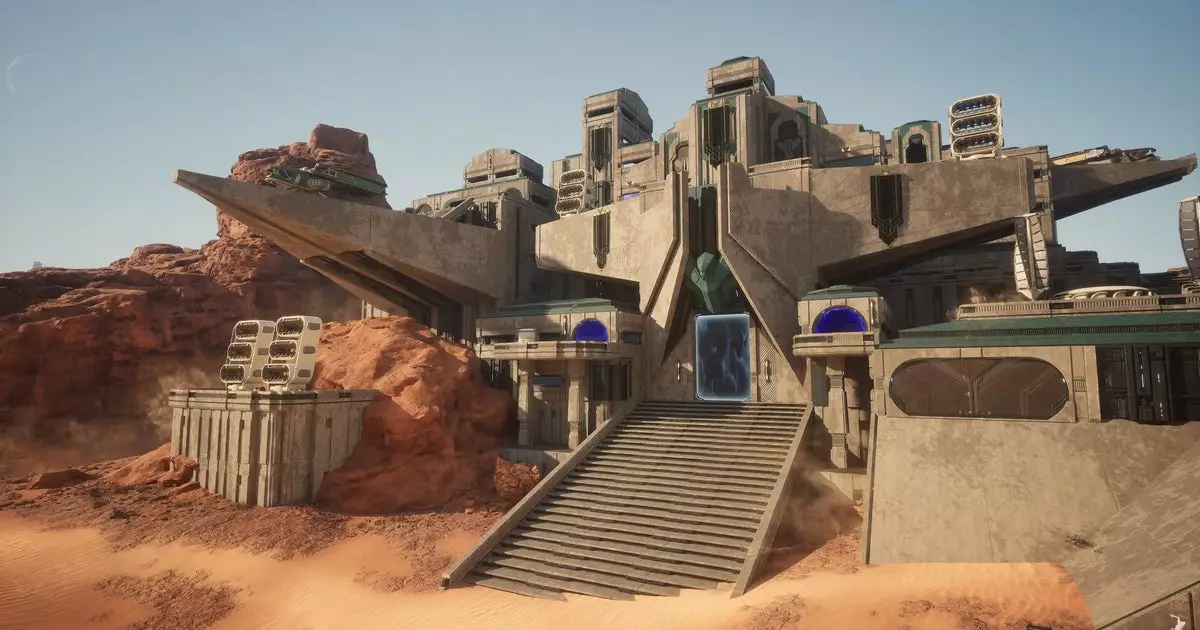The universe of “Dune” has always held a unique place in science fiction with its sweeping landscapes and intricate political landscapes. However, one particular element stands out—the sand. The phrase, “I don’t like sand” echoes a visceral response not just to the texture and irritation of sand but also to the inescapable nature of the desert environment on planets like Arrakis. A world where sandstorms can be lethal creates a thrilling backdrop for exploration and survival that is both captivating and daunting.
In “Dune: Awakening,” a multiplayer experience poised to immerse players within Frank Herbert’s sprawling saga, these elements of danger and survival manifest vividly. As players enter this sandy wasteland, they are immediately confronted with both the breathtaking beauty and the formidable challenges posed by their surroundings. The core gameplay mechanic of base building allows for a creative yet strategic response to these environmental hurdles, promising not just survival but also a canvas for personal expression within this harsh world.
Building Your Sanctuary Amidst the Storms
Initially, the player’s base might appear rudimentary, serving as little more than a makeshift shelter against relentless sandstorms. However, as players gather resources and undertake missions, there exists a tantalizing opportunity to develop a fortress that stands as a testament to their ingenuity. This sense of progression fosters a connection to the game, transforming the initial frustration of vulnerability into an exhilarating journey towards empowerment and control.
One of the standout features is the ability to align with either the House Atreides or House Harkonnen—each choice presenting unique architectural styles and strategic gameplay advantages. This decision is not just cosmetic; it influences the types of structures and defenses players can construct. Suddenly, the player’s experience is enriched by not just the physical manifestations of power, but by the political alliances that guide their actions within the game.
Creative Crafting: A Collaborative Future
The building mechanics in “Dune: Awakening” hint at an engaging crafting system designed for accessibility and creativity. Unlike many complex crafting systems that often feel like tedious chores, the tactile appeal resembles a childlike joy of assembling toys, akin to a digital version of building with Legos. This approach democratizes the crafting experience, inviting players of varying skill levels to participate in the creation of vehicles and structures. Moreover, the ability to turn creations into blueprints for trade or sharing adds a social dimension, enhancing community interaction in a decidedly competitive landscape.
Moreover, the game introduces the concept of “shields” to protect successful builds, adding another strategic layer to base management. However, this comes with the knowledge that players are responsible for sustaining their sanctuaries, creating a compelling balance between risk and reward. This blend ensures that players are not just constructing for aesthetics but are actively engaging in dynamic gameplay that demands foresight and resource management.
Anticipation and Delay: A Bittersweet Reality
As the release date approaches, players have experienced a delay that pushes back their eager return to Arrakis. Yet, the anticipation only adds to the excitement. A longer wait can often translate into a more polished experience, and with the complexities of sandstorms and base building promising to deliver unforgettable moments of both triumph and defeat, fans are willing to endure this minor setback.
This blend of harsh realities juxtaposed with the exhilarating prospect of adventure establishes “Dune: Awakening” as a distinctive entry into the realm of multiplayer games. It caters to both fans of Herbert’s work as well as newcomers, inviting players to forge their paths amid the sands of Arrakis while deftly navigating the challenges that come with survival.


Leave a Reply